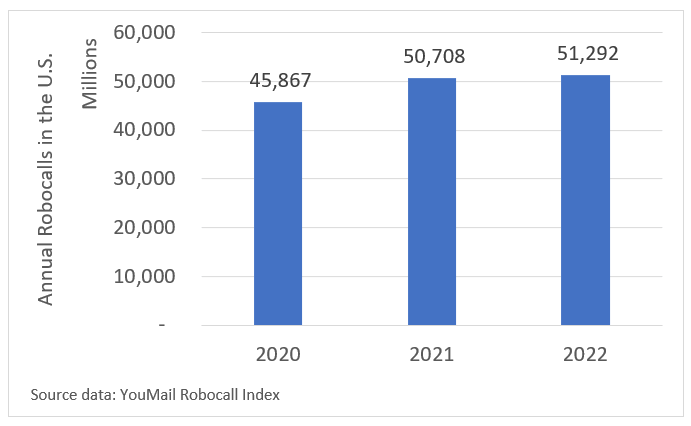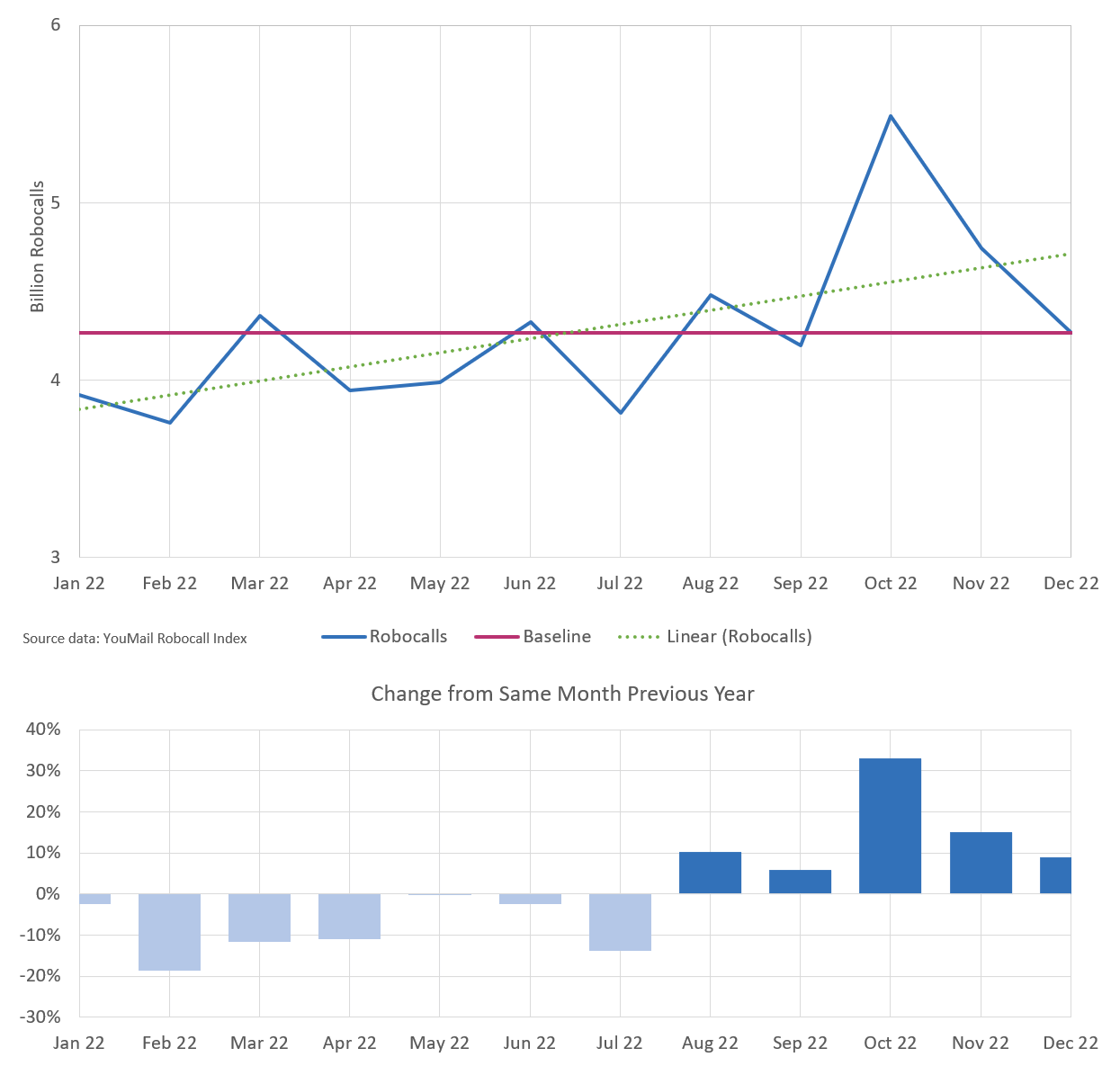Robocalls were up in 2022
Robocalls in the U.S. were up in 2022 versus previous years. Here’s a look at the trends.
Robocalls Were Up Year-over-Year

Figure 1. Annual Robocalls in the U.S. From 2020 Through 2022
Figure 1 shows that annual robocalls in the U.S. during 2022 were up 1.2% over 2021. Annual robocalls in 2021 were up 10.6% over 2020, when robocalls dropped sharply during the early pandemic.
Monthly Robocalls Peaked in October 2022

Figure 2. Monthly robocalls in the U.S. During 2022
Figure 2 shows the following robocall trends:
- Robocalls peaked in October, as in previous years.
- Since October, robocalls have been dropping, although the monthly numbers are still high.
- Despite the recent drop from October, the linear trend for the year is upward (green dotted line).
- The bar chart at the bottom of Figure 1 compares the same months in 2021 and 2022.
- In January through July, monthly robocalls were down from the previous year.
- From August through December, monthly robocalls have been up in 2022 versus 2021.
Robocall remedies
- STIR/SHAKEN call authentication should be used more widely, especially by originating providers that have a direct, authenticated relationship with the caller and the caller’s telephone number. Call authentication with full attestation will improve call analytics used to identify and mitigate potential scam robocalls.
- The FCC should not allow call authentication by a downstream third party signer using its own SHAKEN certificate to satisfy the originating provider’s STIR/SHAKEN obligations. In most cases, the downstream third party signer doesn’t know the callers or their right to use the calling number. Such attestations are not useful. In fact, such calls are a source of many robocalls.
- The FCC should phase out the non-IP SHAKEN extension and require providers that rely on non-IP technology to either transition to IP technology or use one or more of the standardized non-IP SHAKEN methods. This will enable STIR/SHAKEN information to survive transit across the telephone network. Currently, most calls arrive at termination unsigned.
- The Commission should require providers to use both STIR/SHAKEN and robocall mitigation. The two work well together. Neither is sufficient to mitigate illegal robocalls by itself.

TransNexus solutions
TransNexus is a leader in developing innovative software to manage and protect telecommunications networks. The company has over 20 years’ experience in providing telecom software solutions including toll fraud prevention, robocall mitigation and prevention, TDoS prevention, analytics, routing, billing support, STIR/SHAKEN and SHAKEN certificate services.
Contact us today to learn more.
Our STIR/SHAKEN products:
- Work with your existing network
- Support SIP and TDM
- Affordable, easy to deploy